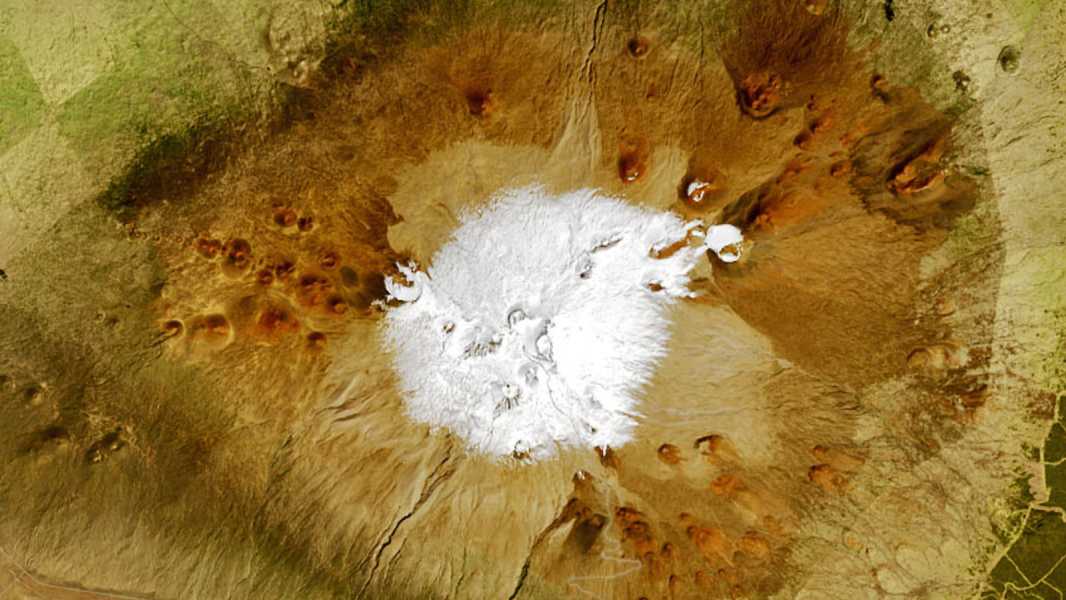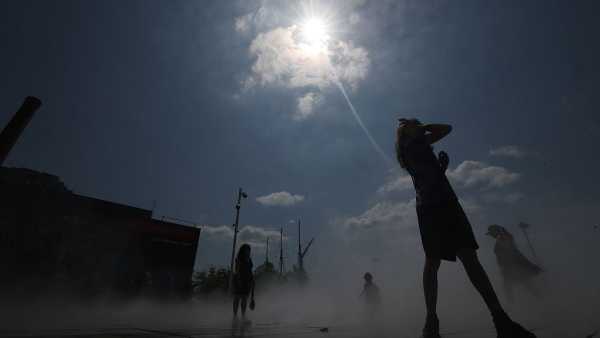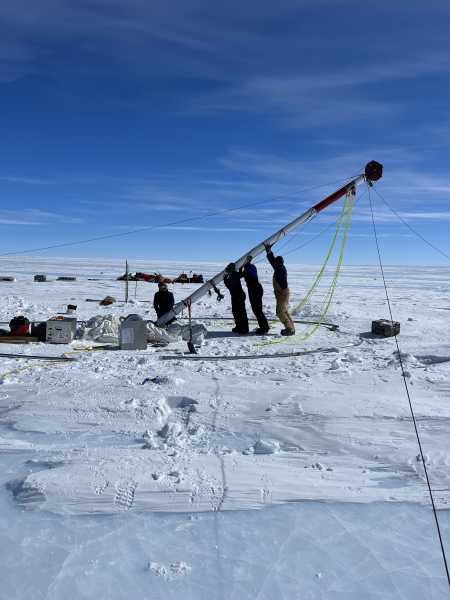
The summit of Mauna Loa was covered in a thick layer of snow, known as “pineapple powder,” after a powerful snowstorm in February 2021. (Photo credit: NASA/Landsat)
Stunning satellite images taken in 2021 show the volcanic peaks of Hawaii's Big Island covered in a significant layer of snow, known locally as “pineapple powder,” following one of the island's heaviest snowfalls in recent memory.
The first image (above) shows the most significant snow cover on Mauna Loa, a 13,681-foot (4,170-meter) volcano located in the center of the Big Island. The second image (below) shows a slightly smaller snow area on Mauna Kea, a 13,796-foot (4,205-meter) peak about 25 miles (40 kilometers) to the north. Both images were taken on the same day.
Mauna Loa remains active, last erupting between November and December 2022, according to the Global Volcanism Research Program. Meanwhile, Mauna Kea is dormant and has not been active for at least 4,600 years.
Snow is more common in Hawaii than many people realize, with Mauna Loa and Mauna Kea receiving at least a dusting of snow every year. However, 2021 has been a particularly extreme year.
At the time of the photo, the total amount of snow covering both peaks was the second-highest for this time of year since records began in 2001, according to NASA Earth Observatory data. A previous snowstorm dumped up to 2 feet (0.6 m) of snow on both volcanoes in a single day.

Mauna Kea received less snow than Mauna Loa, but the combined snowpacks were still near record highs.
Local sources say several islanders traded in their surfboards for snowboards and skis and headed to Mauna Kea to try the rare winter sport once the roads were cleared.
Pineapple powder
Hawaiian snow is often attributed to a meteorological phenomenon called Kona-low, according to Earth Observatory. It occurs when winds shift from their usual northeasterly direction to the southwest, or “kona” side, picking up moisture from the tropical Pacific Ocean that turns into rain and snow as it rises up the mountain slopes.
Snow most often falls during the period
Sourse: www.livescience.com





